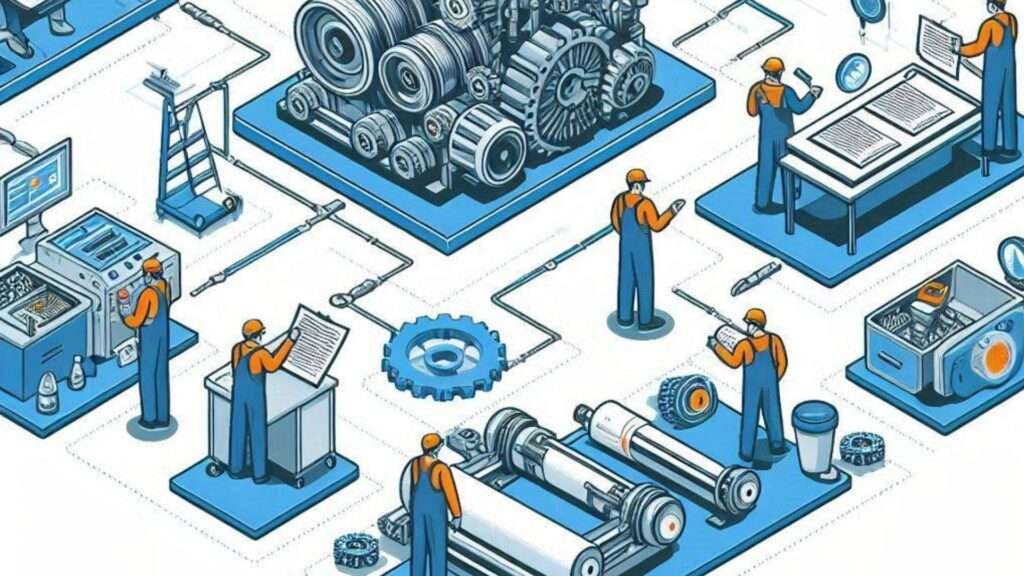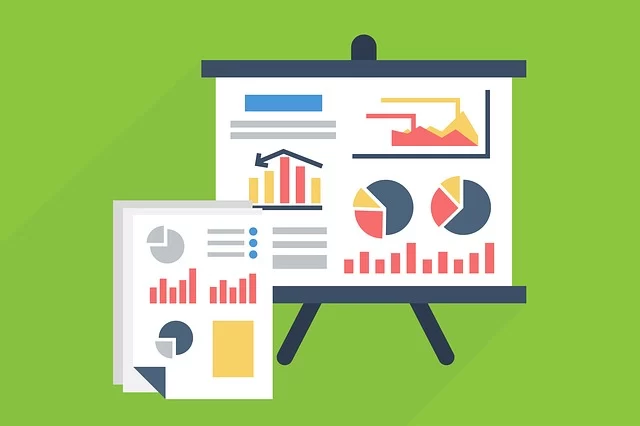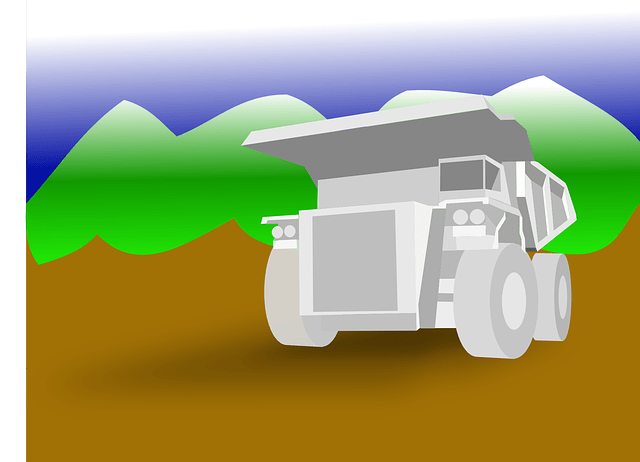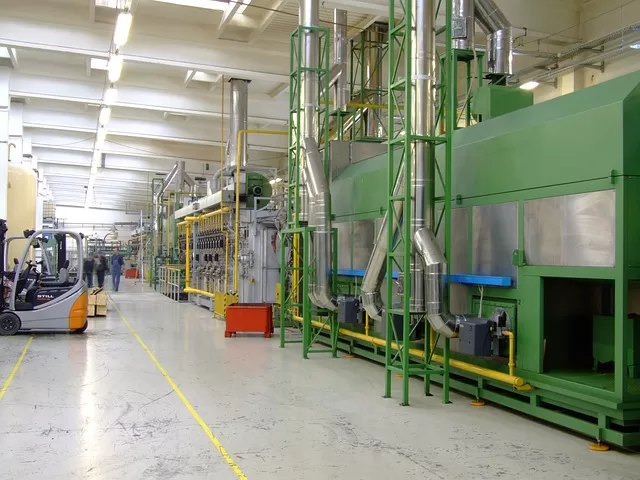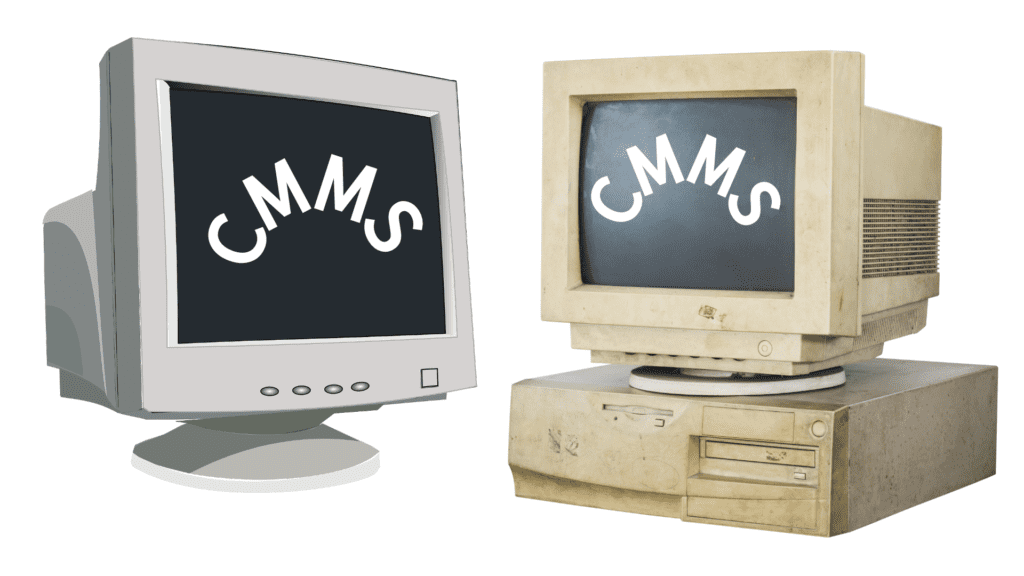
The Early Years of Computerized Maintenance Management Systems
Today, I thought I’d give you some background on Computerised Maintenance Management Systems, Asset Management Systems, Maintenance Management Software Products, and Enterprise Resource Planning Software Products in our world.
To keep things simple, I’ll refer to any software product in this category as Computerised Maintenance Management Systems, or CMMS. CMMS software solutions have transformed the way businesses manage their maintenance operations.
Used correctly, CMMS solutions improve asset performance and overall operational efficiency by streamlining maintenance processes.
So, without further ado, let’s go on a journey through the history of CMMS, looking at their origins, notable products, and current relevance.
In the early 1970s, the first computerised maintenance management systems appeared. In the years that followed, the concept of CMMS gained significant traction, resulting in the introduction of several trailblazing products. Without a doubt, the pioneering 20 years of 1970-1990 are where the CMMS rubber met the road.
No.1 – 1972 – SAP:
This now truly massive software company was founded was in 1972 by five former IBM employees; Dietmar Hopp, Hasso Platter, Claus Wellenreuther, Klaus Tschira, and Hans-Werner Hector.
SAP got was initially called System Analysis Program Development (Systemanalyse Programmentwicklung), which was a real mouthful, you wouldn’t want to have to say that 20 times as fast as you can. So they thankfully abbreviated it to SAP.
SAP is a global business headquartered in Walldorf, Germany, with more than 105,000 employees worldwide. The company established the global standard for enterprise resource planning (ERP) software and has been a leader in the industry for over 50 years.
SAP’s current ERP software solution, SAP S/4HANA, uses the power of in-memory computing to process vast amounts of data and support advanced technologies such as artificial intelligence and machine learning.
SAP’s founders and employees have always worked closely with their customers, often sitting side-by-side with employees in customers’ offices to learn their business needs and processes. Although I’m jumping the timeline a little, one example of this is the transaction IW37n. We used to only have IW37 and IW38 to manage out work order information. SAP is an operation/activity based solution but IW37 was lacking in a few areas but that IW38 had those bits of info we needed. So SAP just joined the 2 (very roughly speaking of course) and gave the world IW37n.
Getting back to the timeline, by 1975, they had built applications for financial accounting, invoice verification, and inventory management. SAP’s ever evolving ability to blend real-time data processing, standardization, and integration were probably the basis for SAP transforming from a small German company into a global leader in business software.
SAP does a lot in the space of sponsoring sport, entertainment industries, athletes, performers and teams. The list if very long but it includes National Football League (NFL), Women’s Tennis Association (WTA), National Basketball Association (NBA), German Football Association (DFB). Another big ticket sponsorship from SAP is in the Formula1 arena. SAP has partnered with the Mercedes-AMG PETRONAS F1 Team.
I’m thinking you could walk down just about any street of the world and encounter at least one person that has heard of the term SAP.
No.2 – 1977 – JDEdwards or JDE:
This extremely versatile CMMS solution was founded in 1977 by Jack Thompson, Dan Gregory, and C. Edward McVaney (Jack, Dan, Edward = JDE). They initial set up shop in Denver, Colorado.
Their goal was to create a comprehensive business management software solution that could streamline operations and improve efficiency for organizations across various industries.
JDE would very successfully integrate various business functions into a single, unified platform and encompasses modules for finance, supply chain management, manufacturing, human resources, project management, customer relationship management and maintenance.
By consolidating these critical functions, JDE enabled companies to enhance productivity, reduce costs, and make informed business decisions.
One of the key strengths of JDE is its tremendous flexibility. The software can be customized to meet the specific needs of different industries, allowing organizations to tailor the system to their unique requirements.
This adaptability has made JDE a popular choice for companies operating in diverse sectors, including manufacturing, distribution, construction, and service industries.
The company was acquired by PeopleSoft in 2003, which was later acquired by Oracle Corporation in 2005. Oracle’s JD Edwards EnterpriseOne is an integrated applications suite of comprehensive enterprise resource planning software that combines business value, standards-based technology, and deep industry experience into a business solution with a low total cost of ownership.
JDE is used by many companies, one of these in particular is Thiess. Thiess was once an Australian owned mining, civil engineering and construction conglomerate. Thiess was established in the 1930s as Horn & Thiess and later became Thiess Bros and Thiess Contractors before being bought by Leighton Holdings in 1983 to become part of the CIMIC Group.
As of December 2020, CIMIC Group apparently sold 50% of Thiess to funds advised by Elliott Advisors (UK) Ltd. Therefore, Thiess is now jointly owned by CIMIC Group and Elliott Advisors (UK) Ltd.
No.3. – 1979 – MIMS:
Maintenance Information Management System (MIMS), was the brainchild of a handful of very clever Queenslanders that felt there was something missing in the CMMS market at they time.
Only five people were involved at the start and it all began with less than $50k seed money but I guess in 1979 $50,000 in 2024 would be worth about $200,000. That’s still not a lot of money when you think about it, given they would have been all trying to live and pay for business accommodation and all sorts of expenses.
They came up with the name Mincom via a contraction of the term ‘Mining Computing’.
Mincom was a great software company and MIMS was a brilliant CMMS. I worked for Mincom for over a couple of short stints in the mid 1990’s out of their office at the corner of Skyring Terrace and Wyandra St in Teneriffe.
Mincom would provide MIMS and related consulting services companies all over the world and in many different industries. They were very successful in the mining, public infrastructure, defence and oil and gas industries across more than 40 countries.
MIMS would eventually get a new name and was called Ellipse. The ownership of the company would change many times over the years and now rests in the very capable hands of Hitcahi. I for one would love to see Ellipse make a big comeback.
No.4 – 1983 – Mainpac:
This asset management software solution is comprehensive and has helped many organizations efficiently manage their assets throughout their lifecycles.
Mainpac was first introduced in 1983 by the suitable named Mainpac Pty Ltd, an Australian software company. They are still going strong and have an off in Baulkham Hills in NSW, Australia.
With over 35 years of experience, Mainpac has become a trusted name in many different industries and I can remember a time that a lot of vineyards were using Mainpac. This worked out very well for a friend of mine who was a Mainpac Consultant.
Mainpac offers a range of features such as asset tracking, maintenance scheduling, and inventory management. They have continually evolved to meet the changing needs of businesses, providing innovative solutions that optimise asset performance and reduce downtime.
No.5 – 1985 – IBM Maximo:
Remarkably, IBM Maximo was only initially developed as a maintenance management system for IBM’s internal use only. I’m glad it didn’t stay that way. Once IBM did release Maximo out in to the world it quickly became one of the most popular CMMS solutions on the planet and I’m fairly sure it was called ‘Maximo for Utilities’. Maximo was designed to address the complex challenges faced by utility companies in managing their assets, such as power grids, pipelines, and telecommunication networks. Its primary focus was to optimise asset performance, minimize downtime, and enhance overall operational efficiency.
The creation of IBM Maximo software involved a collaborative effort by a team of talented individuals such as John Holleran, who was one of the lead architects. Holleran played a pivotal role in shaping the vision and functionality of Maximo. Jim Kirkpatrick is another very important name when it comes to Maximo, Jim contributed his expertise in asset management and maintenance, ensuring that Maximo met the industry’s evolving needs. Ray Miciek would also play a major role in the development of Maximo, his extensive knowledge in enterprise software development was instrumental in building the robust infrastructure of Maximo.
Maximo offers companies a comprehensive asset management solution with some fantastic capabilities. I used Maximo for a few years in the Oil and Gas industry and loved it. From the time Maximo was first released to now, it is constantly setting the standards for CMMS software products each time they put out a new release. I think it would be very fair to say that IBM’s Maximo software has revolutionized the way businesses manage their assets, maintenance, and operations.
Maximo’s robust features and extensive capabilities have helped it become a leading enterprise asset management (EAM) solution used by companies worldwide and across most industries. Maximo empowers organizations to enhance their asset management practices. Some of the notable companies that rely on Maximo include General Electric, ExxonMobil, Delta Airlines, Toyota and the City of New York. Some rather big names in a short extract of what is a very long list.
No.6 – 1985 – MP2: Initially developed by Datastream Systems, this was another one of the first commercially available CMMS solutions. It gained popularity for its user-friendly interface and robust maintenance management features.
MP2 was a computerized maintenance management system (CMMS) software package used by maintenance organizations to improve asset performance, customer satisfaction, and plant profitability.
MP2 would later be acquired by Infor Global Solutions Group in 2006. MP2 would be around for many years and the name never changed which I like. Naturally, MP2 was upgraded many times over the years and it’s last version that I have any notes on was MP2 6.1 SQL, which was released in 2007. I’m sure there would have been many upgrades since then.
Infor would eventually be purchased by Hexagon AB, a global leader in digital reality solutions. Sadly, a little after this news, Hexagaon AB announced that MP2 would no longer be sold. MP2 was taken on by at least 15,000 companies over the years, so they did very well. Those involved with MP2 should feel very proud of what they achieved.
In conclusion
The very long history of computerized maintenance management systems, asset management systems, maintenance management software products, and enterprise resource planning software products is a testament to the continuous evolution of technology and the growing importance of efficient maintenance operations. From the early pioneers to the modern-day solutions, CMMS products have transformed the way organizations manage their assets and streamline maintenance processes.


